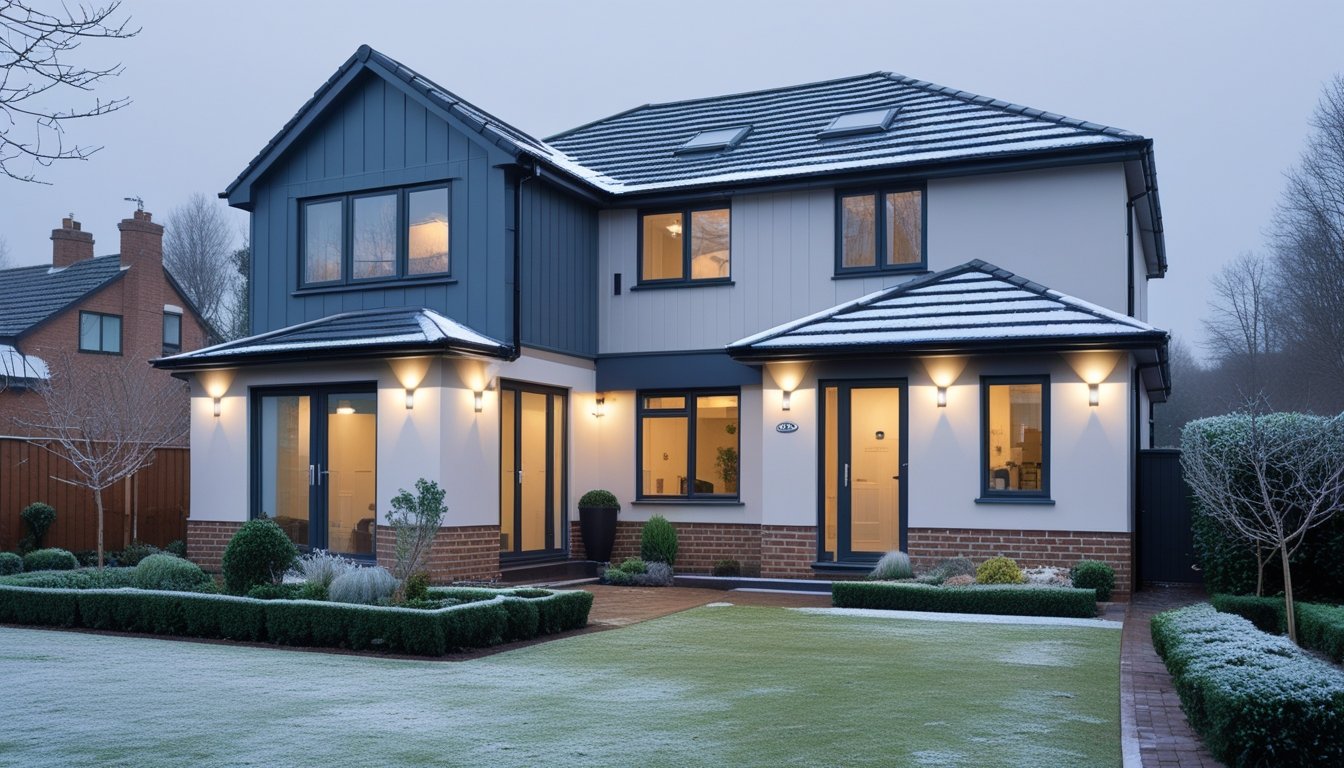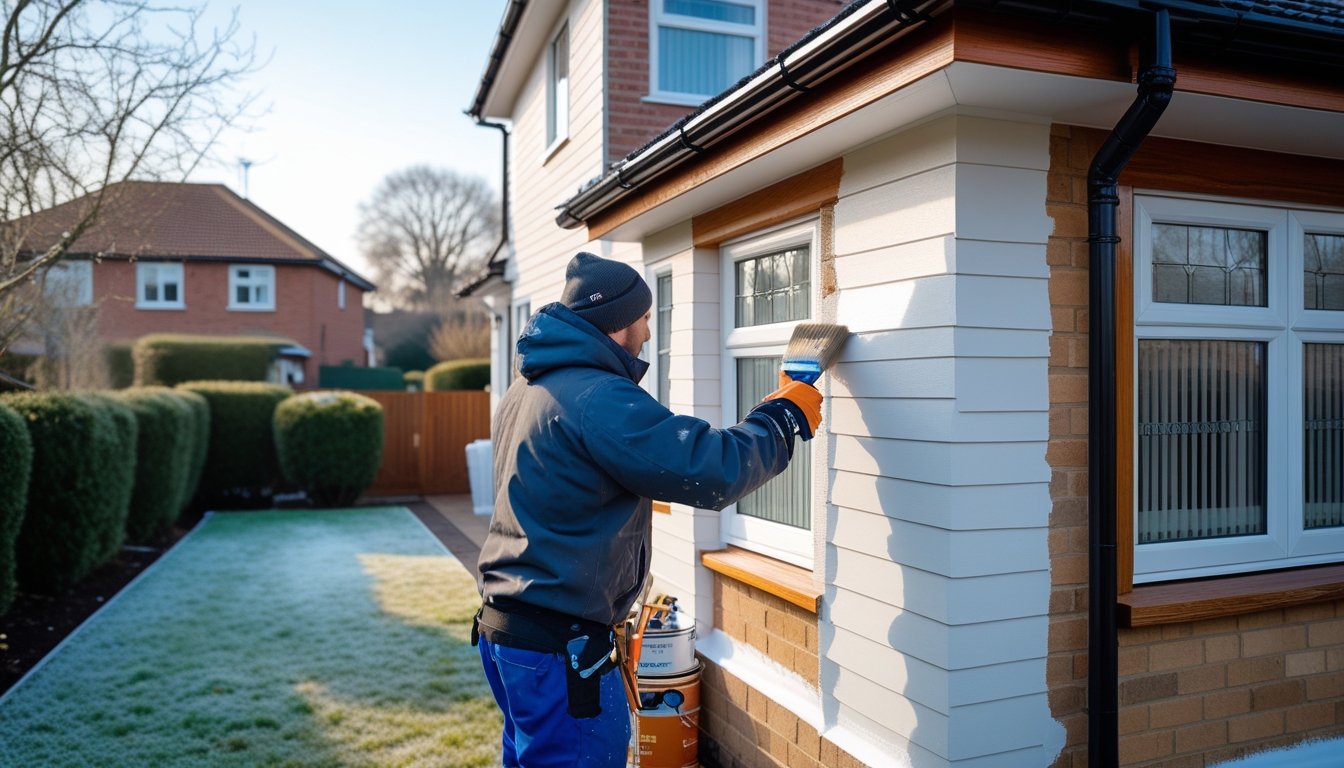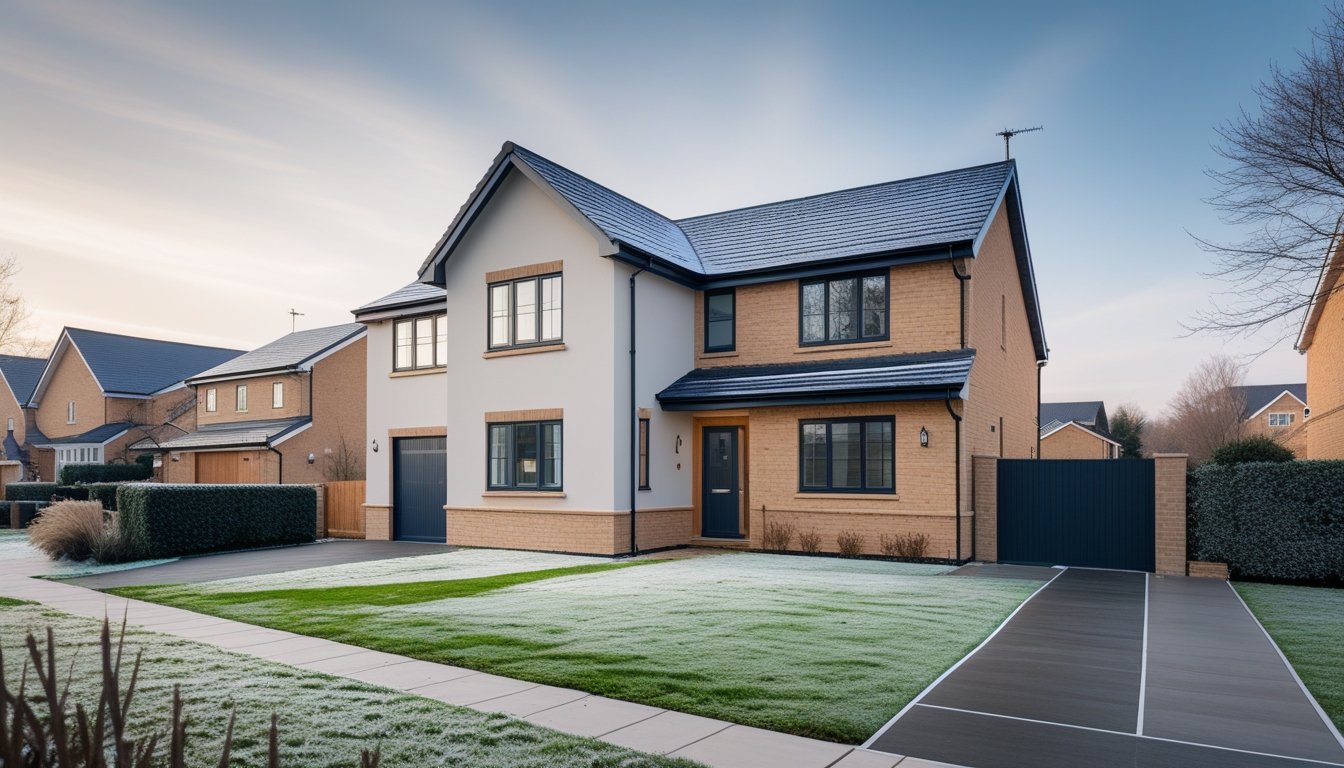Late updated: 25 Oct 2025 09:10
Written by: Oliver Bennett
Exterior House Paint Options For UK Winter Weather: Best Choices For Durability
The weather in the UK presents unique challenges for selecting exterior house paint that withstands winter conditions without compromising durability. Colouring the exterior of your home needs careful planning to ensure it not only boosts kerb appeal but also protects the structure from harsh weather. Choosing the right paint can mean the difference between a long-lasting finish and a regrettable weathered appearance. Whether it’s cold temperatures or frequent rain, selecting the right types of paint and preparing properly are crucial steps.

Many homeowners wonder if it's truly possible to paint their homes during the UK's colder months. Exploring a mix of products designed for lower temperatures helps alleviate these concerns. Paints with low freeze points, often oil-based, are recommended for winter projects, but they require suitable conditions to achieve the best results.
Ultimately, timing the job is as important as product choice, with spring and early summer typically being the more favourable periods. Paints specifically engineered for winter can still be used effectively with the correct preparations, while patience assures the desired outcome. A carefully planned approach ensures that our exterior projects last well and look outstanding.
Key Takeaways
- Select paints designed for cold weather for durability.
- Timing the painting project carefully optimises results.
- Adequate preparation and product choice are vital for success.
Exterior House Paint Options and Key Considerations for UK Winter Weather
Painting a house exterior in the UK during winter presents unique challenges due to the cold and damp conditions. It's crucial to select appropriate paint formulations, prepare surfaces thoroughly, and monitor weather conditions closely to ensure the paint adheres well and provides long-lasting protection. Each of these factors plays a critical role in achieving successful results.
Challenges of Exterior Painting in Cold and Damp Conditions
Winter painting in the UK poses significant challenges primarily due to unpredictable weather and low temperatures. Cold can slow down drying times, resulting in paint finishes that don't adhere properly.
Dampness is another concern, as it can cause issues with paint adhesion and lead to peeling. These factors necessitate careful planning and execution.
Painting during winter requires more than simply applying paint; it involves battling against nature. We must account for moisture levels; high humidity increases the risk of paint not curing correctly. In such conditions, choosing the right time and precise application techniques is crucial to overcoming these challenges.
Choosing the Right Paint Formulation for Winter
When selecting paint for winter projects, we must consider options designed to withstand colder temperatures.
Masonry paint and durable exterior-grade paints are often ideal. These formulations contain additives that enhance performance in low temperatures. They also help the paint remain flexible and resist cracking. Opting for paint with low VOC levels can ensure it performs in fluctuating conditions.
Weather-resistant paints are critical, as they offer added protection against harsh weather. Look for paints that advertise rapid drying times and mould resistance for added reliability in the winter months. Using such formulations helps maintain the appearance and longevity of the exterior.
Essential Surface Preparation in Winter
Proper surface preparation is vital for a successful paint job, especially in winter. Surfaces must be clean and dry before painting to ensure the paint adheres well.
This involves removing mildew, dirt, and any loose or flaking paint. Sanding and priming can create a suitable surface for the paint to bond. During colder months, we might need to allow extra time for priming layers to dry.
Repairs should be made to any damaged areas before painting. Filling cracks and sealing them properly prevents moisture ingress. By preparing surfaces meticulously, we can tackle winter's challenges and ensure a quality finish.
Timing and Monitoring the Weather Forecast
Timing is a crucial factor in exterior painting during winter. We must watch for weather windows when the forecast predicts dry conditions with mild temperatures.
Avoiding days of heavy rain or freezing temperatures is essential. Schedule painting on warmer days to encourage even drying and curing. Monitoring short- and long-term forecasts can help us identify optimal painting days.
Using rapid-drying products on these ideal days ensures the paint has enough time to set properly. By carefully timing our painting efforts, we increase the chances of a successful and durable exterior finish.
Best Time and Professional Tips for Painting Your Home Exterior in the UK

Choosing when to paint the exterior of your home in the UK is essential for ensuring a long-lasting, durable finish. Alongside timing, employing expert techniques and quality materials is crucial for optimal results.
Optimal Seasonal Windows and Regional Factors
In the UK, painting is best during spring, early summer, and early autumn. During these periods, mild temperatures and low humidity allow paint to dry and adhere effectively. It's important to avoid the cold, damp conditions of winter, which hinder proper paint curing.
Regional climates vary, with the South East enjoying more dry days compared to the North West. We should tailor our painting schedules according to local weather patterns and prolonged dry spells.
Best Practices for Achieving Durable Results in Winter
While winter isn’t ideal, painting can be undertaken with careful planning. We need to select paints specifically designed for low-temperature applications, like those offered by Nevis Paints.
Preparation is vital—surfaces must be clean and dry. Additionally, choosing a day with no rain forecasts and using heaters can help maintain optimal drying conditions. Notice how local temperatures and moisture levels impact the drying process.
Recommended Paint Brands and Products for the UK
The choice of paint significantly influences the longevity of our exterior finish. Nevis Paints provides options well-suited to UK conditions, with products designed to resist the challenging climate.
When seeking quality, look for brands that offer UV resistance and weatherproofing. These features help prevent fading and ensure the paint remains intact through rain and sunshine alike. Consulting reviews and paint specifications can aid in selecting the right product.
Common Mistakes and How to Avoid Them
One frequent mistake is ignoring weather forecasts, which can lead to rain-damaged work. Always check the weather and plan for dry days. Additionally, failing to prepare surfaces properly can result in peeling or bubbling paint.
To avoid these issues, thorough surface cleaning and repair are necessary. Misjudging the type of paint for specific surfaces also creates problems. Ensure compatibility by verifying that selected products suit the substrate materials. Adhering to manufacturer guidelines helps achieve the desired results.
Frequently Asked Questions

In the context of UK winters, selecting suitable paints is crucial due to the harsh weather conditions. Preparing surfaces properly and using recommended application methods are equally essential to ensure durability and longevity. Here, we address common queries about painting exteriors during the British winter months.
What are the best types of paint for enduring cold and wet British winters?
For UK winters, we recommend using masonry and oil-based paints. These types offer robust protection against moisture and temperature extremes. They adhere well and provide a reliable barrier against the elements.
Can masonry paint withstand the frequent freeze-thaw cycles typical in the UK winter months?
Yes, masonry paint is designed to handle the UK's freeze-thaw cycles. It expands and contracts with the surface, preventing cracks. This flexibility helps it maintain a strong bond, even in challenging winter conditions.
How does one prepare exterior surfaces for painting in unpredictable UK winter conditions?
Preparation is key. We must ensure all surfaces are clean and dry. Removing old, flaky paint and repairing cracks helps create a smooth base. This ensures new paint adheres properly and provides good coverage.
Are there specific brands known for their durability against UK winter elements?
Some brands are renowned for their resilience in winter conditions. Seeking out recommendations from professionals or reviews can guide us to brands that consistently withstand adverse weather.
What application methods are recommended for painting exteriors in low winter temperatures?
Using brushes and rollers is advisable, as they work well in lower temperatures. We should avoid spraying paint, which can be less effective in cold. Applying paint in the mid-morning allows it the maximum time to dry before temperatures drop.
How can one ensure the longevity of exterior paintwork despite the harsh UK winter weather?
Regular maintenance helps preserve painted surfaces. Inspecting for damage and touching up affected areas can prevent minor issues from worsening. It's also wise to choose high-quality paints and follow the manufacturer's instructions carefully.
